And not only an amphitheatre
While Gary and I were staying in the historic city of Rovinj, along the Adriatic Sea coastline in Croatia, we decided to explore a little further afield. Keeping within the region of Istria, we ventured off to the southern tip of the Istrian peninsula to visit the ancient city of Pula.
Pula is around 25 miles (40km) south of Rovinj, so it is pretty close. Even though we had been touring Croatia on a road trip for a couple of weeks, it was great just to embark on a short hop and explore a new location.
Our Croatian road trip has so far included a stay at the Plitvice Lakes NP, then onto the delightful cities of Zadar, Trogir, Dubrovnik, Split and Rovinj.
Are you considering a Croatian adventure? Take a look at our itinerary for our Croatian road trip and discover 6 UNESCO World Heritage sites.
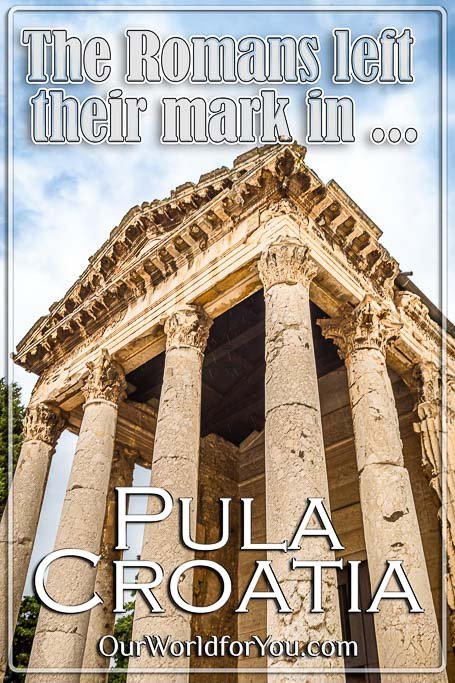
Where is Pula?
How to get to Pula
- By Plane
There are various airports to choose from in Croatia; browse through Booking.com for departures from your local airport. Pre-book your hire car from Rental Cars, and your adventure begins.
- By Car
If you’re heading from the UK by car, jump on Le Shuttle or a Brittany Ferry and venture off to Croatia under your own steam. Check out our Road Trip checklist for handy advice.
Stay informed
Pula Roman Amphitheatre
How has it survived?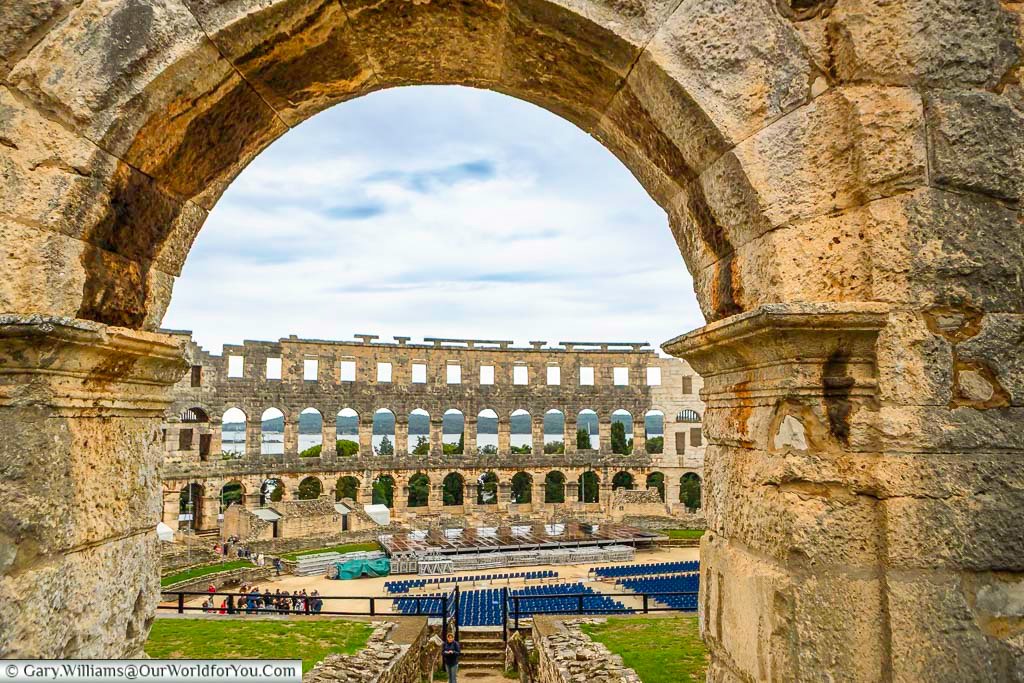
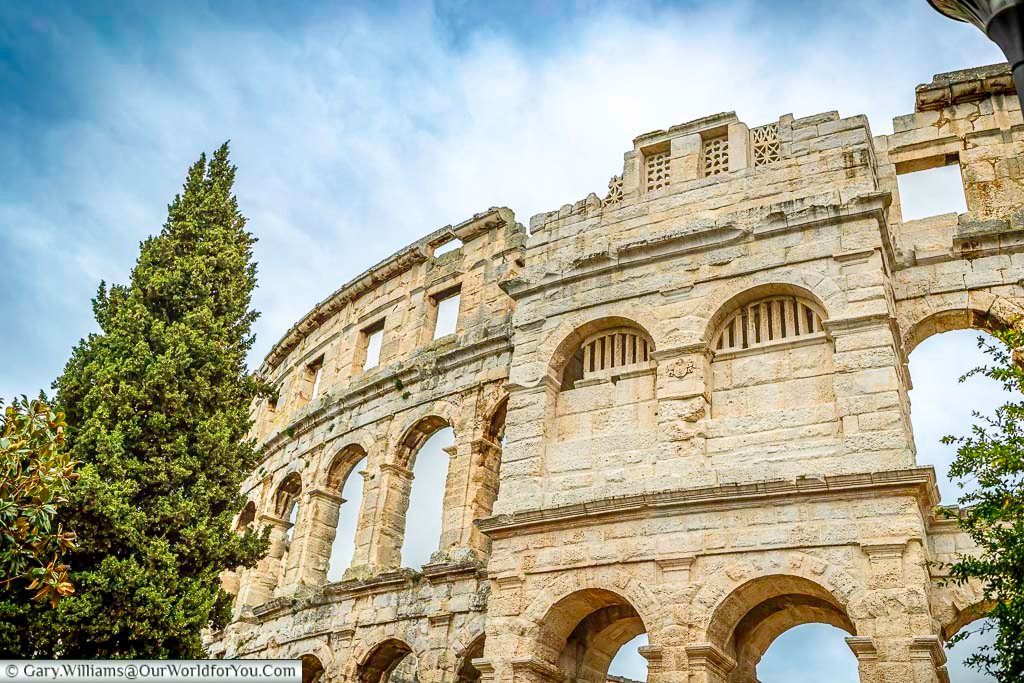
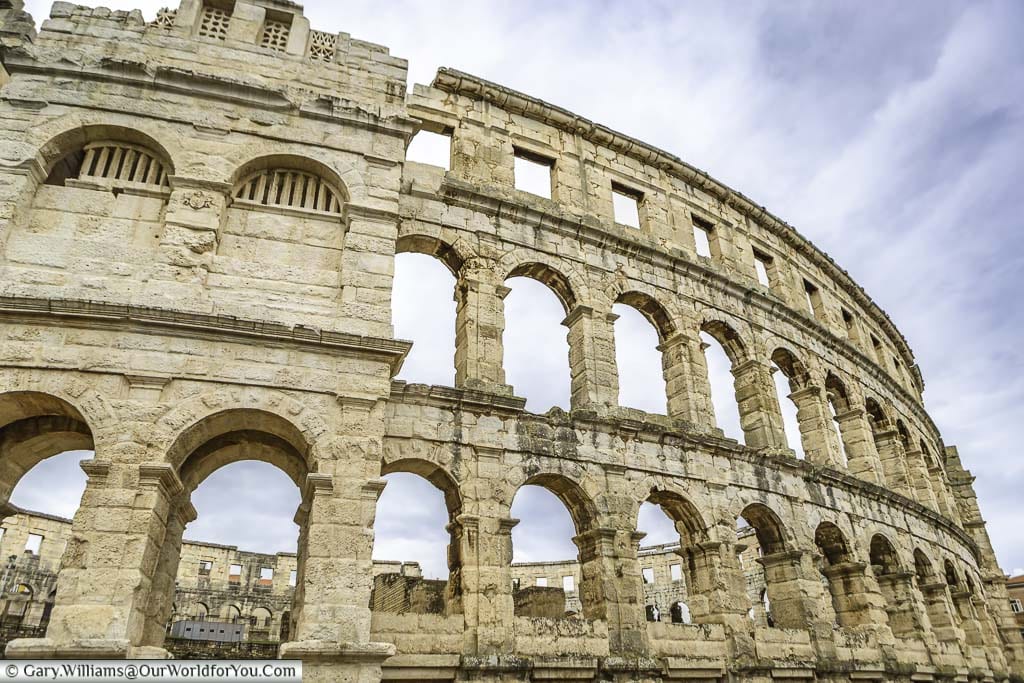
If you've yet to discover the delights of Croatia you're in for a treat. While planning our road trip, I used the DK Eyewitness books. I find them extremely informative, easy to follow and the pictures and maps tempt you into discovering more.
We used a previous version of this book to plan our north to south Croatian road trip, now you can grab the revised copy.
Rovinj’s historic gates
A Roman legacy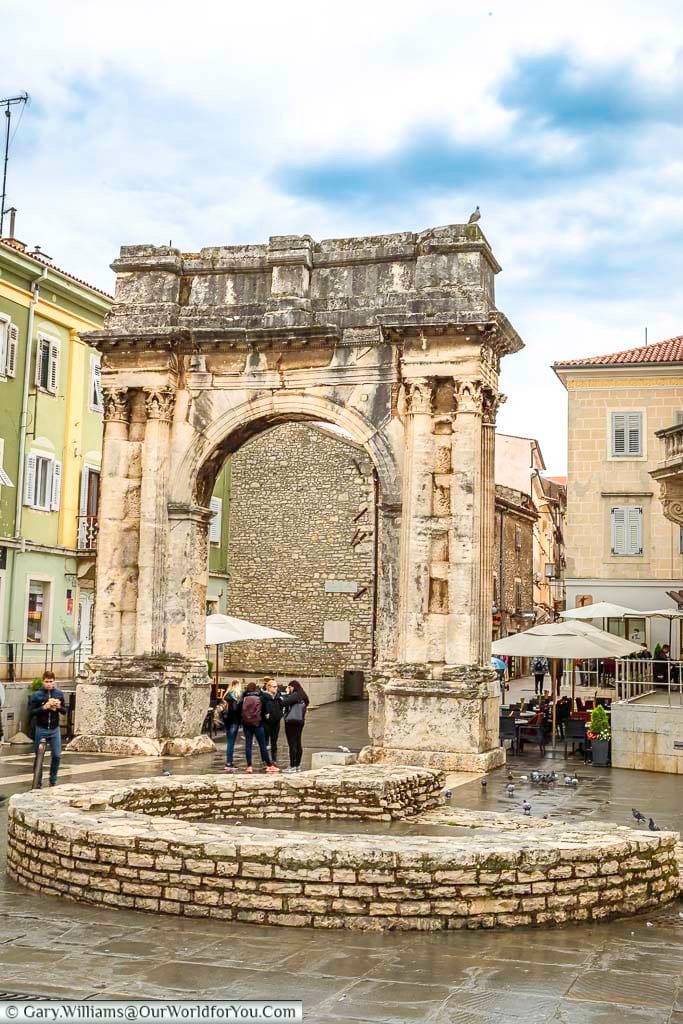

The most renowned of the magnificent arches is the Triumphal Arch of the Sergii. This early arch was originally a city gate built between 29 and 27 BC and now commemorates the Sergii family.
Other gates to be found in Pula are the Twin Gate (Porta Gemina), which dates from the mid-2nd century, and the Hercules Gate, which dates from the 1st century.
Discover Mr. James Joyce
Once a local resident of Pula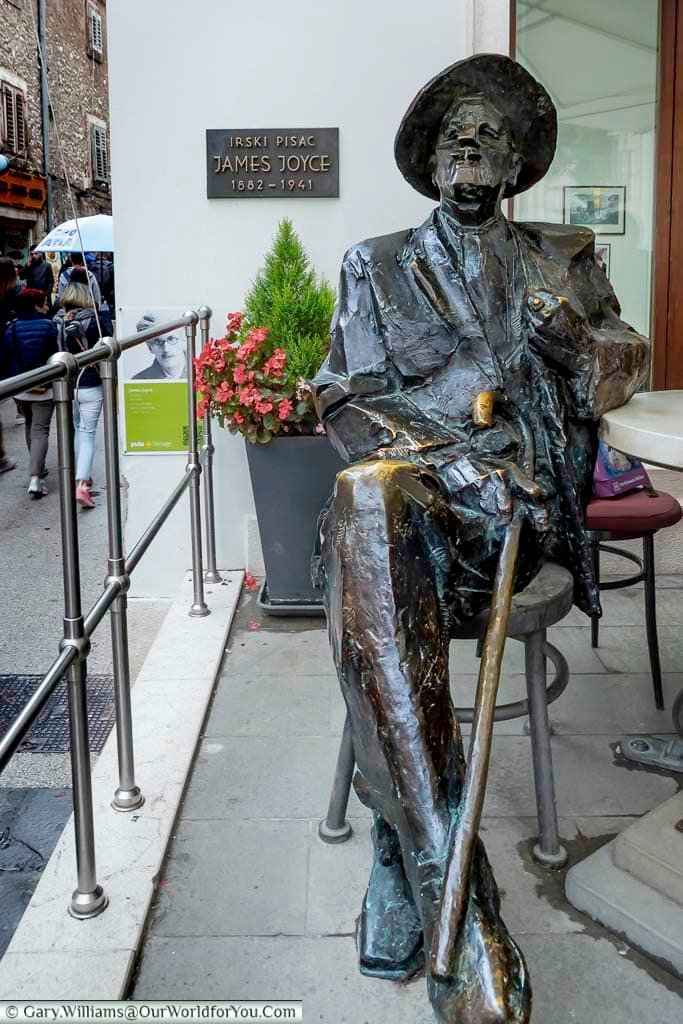
Exploring Pula Forum
Temple of AugustusAs you continue to stroll through the fascinating lanes of Pula, you’ll discover the enchanting Forum. This beautiful square is a lovely place to enjoy a refreshment and sit and watch the world go by. If only the weather were on our side.
The Augustan Forum, which is located close to the sea, was built during the 1st century BC and would have been surrounded by Roman temples.
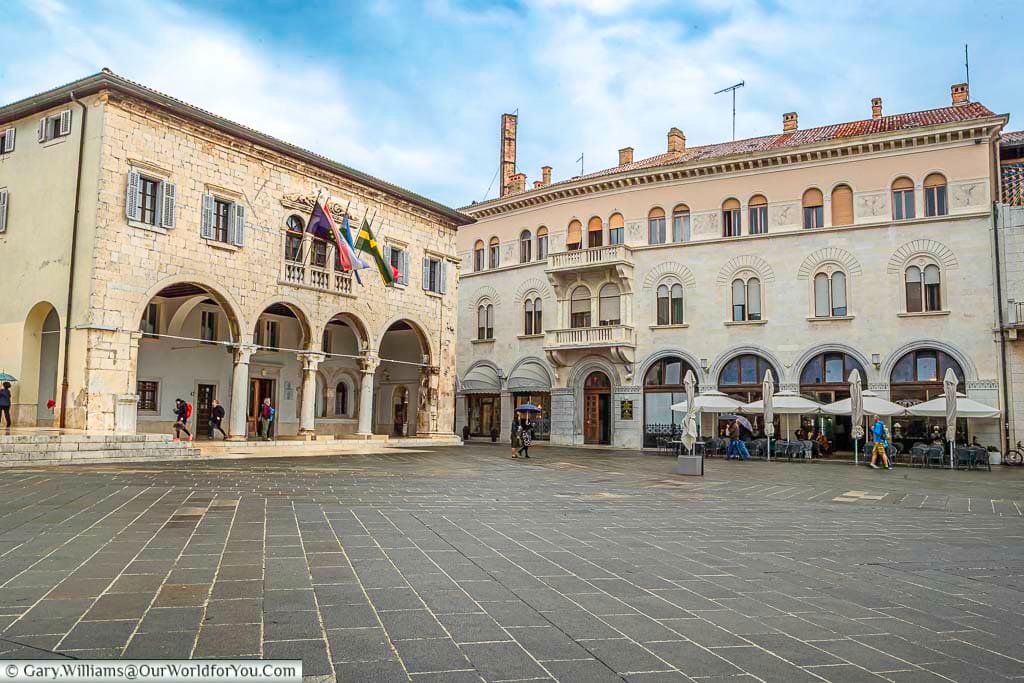
Today, the Augustan Forum is still encircled by some magnificent buildings; the most eye-catching of them all is the remarkable 1st-century Temple of Augustus.
This beautifully preserved temple was dedicated to the Roman Emperor Augustus and would have been erected during his lifetime between 27 BC and AD 14. It is quite a focal point for the forum.
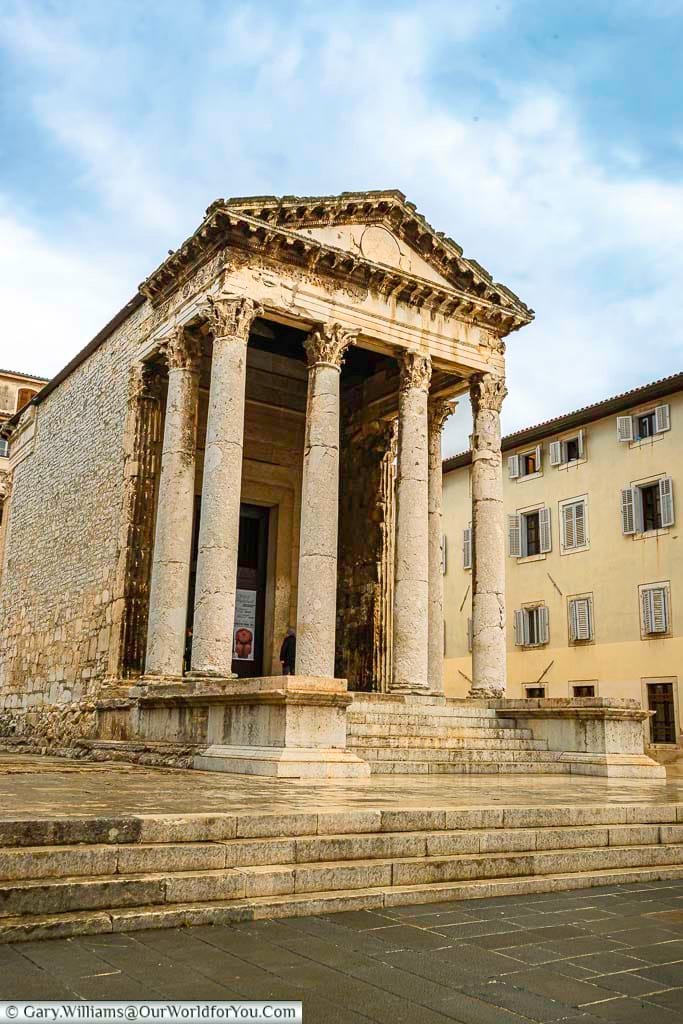

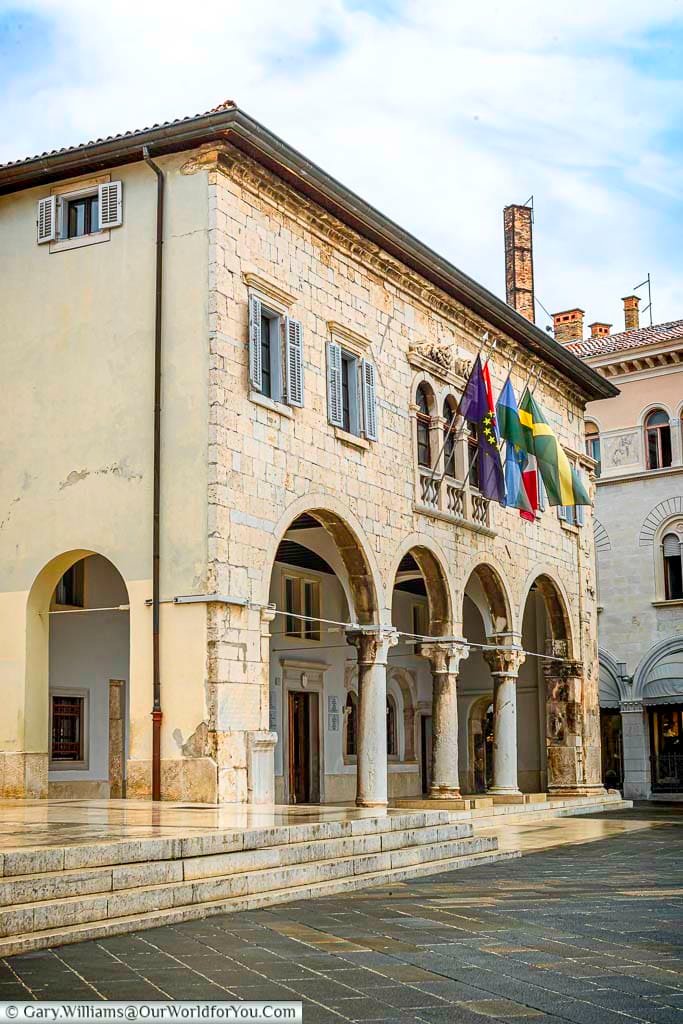
Visiting Croatia
Visiting Pula Cathedral
Charming Renaissance façade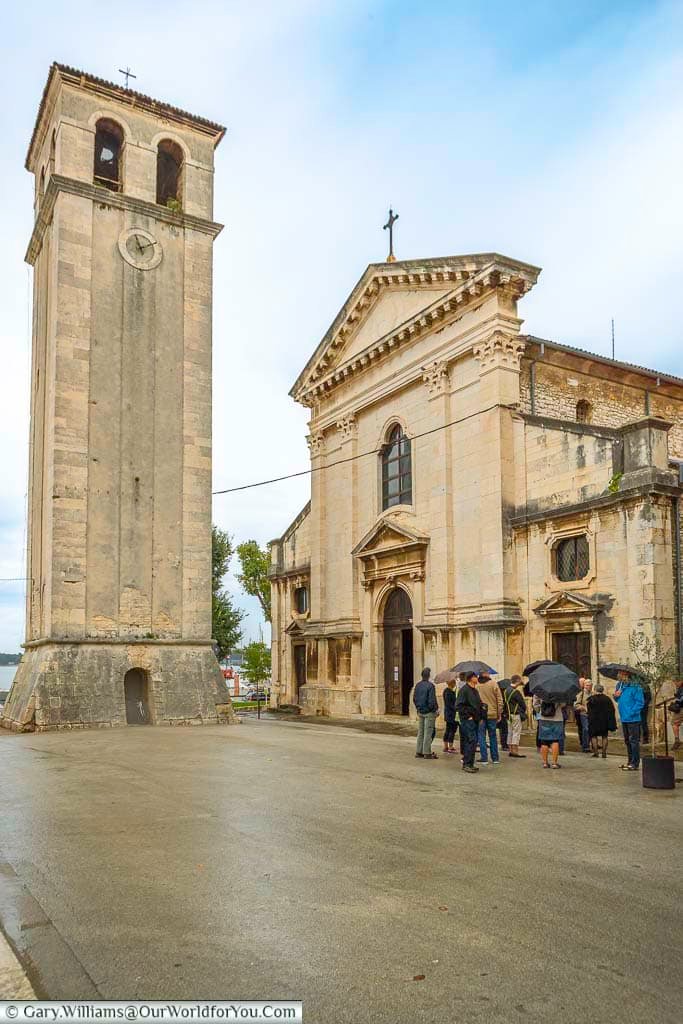
In front of Pula Cathedral sits a freestanding Baroque-style Bell Tower. It was constructed during the late 17th century using stone blocks from Pula’s Roman Amphitheater.
The Forum and the cathedral suffered during the bombings of WWII. However, repairs were carried out soon after, in 1947, to preserve Pula’s history.
Pula Citadel
A Venetian fortress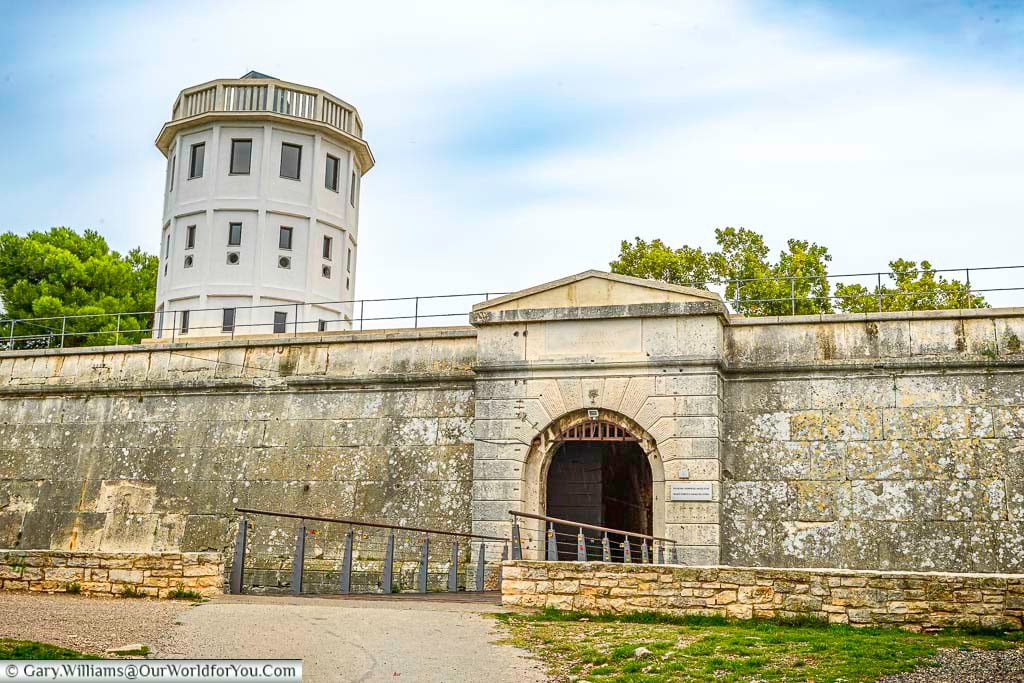

Where we stayed in nearby Rovinj
Our accommodation for the two nights we were in Rovinj was at the “Apartments Martina City Centre”.
The apartment was very spacious, and the location was extremely central and just a short stroll to the harbour and Old Town. The owners were unbelievably helpful and friendly and couldn't do enough for us.
One of the main reasons we chose this apartment was for the private parking, which was fantastic. We have a larger car, and once in the gate, there is plenty of room to manoeuvre.
* This post may contain links to affiliated sites where we earn a small commission at no additional charge to you.



